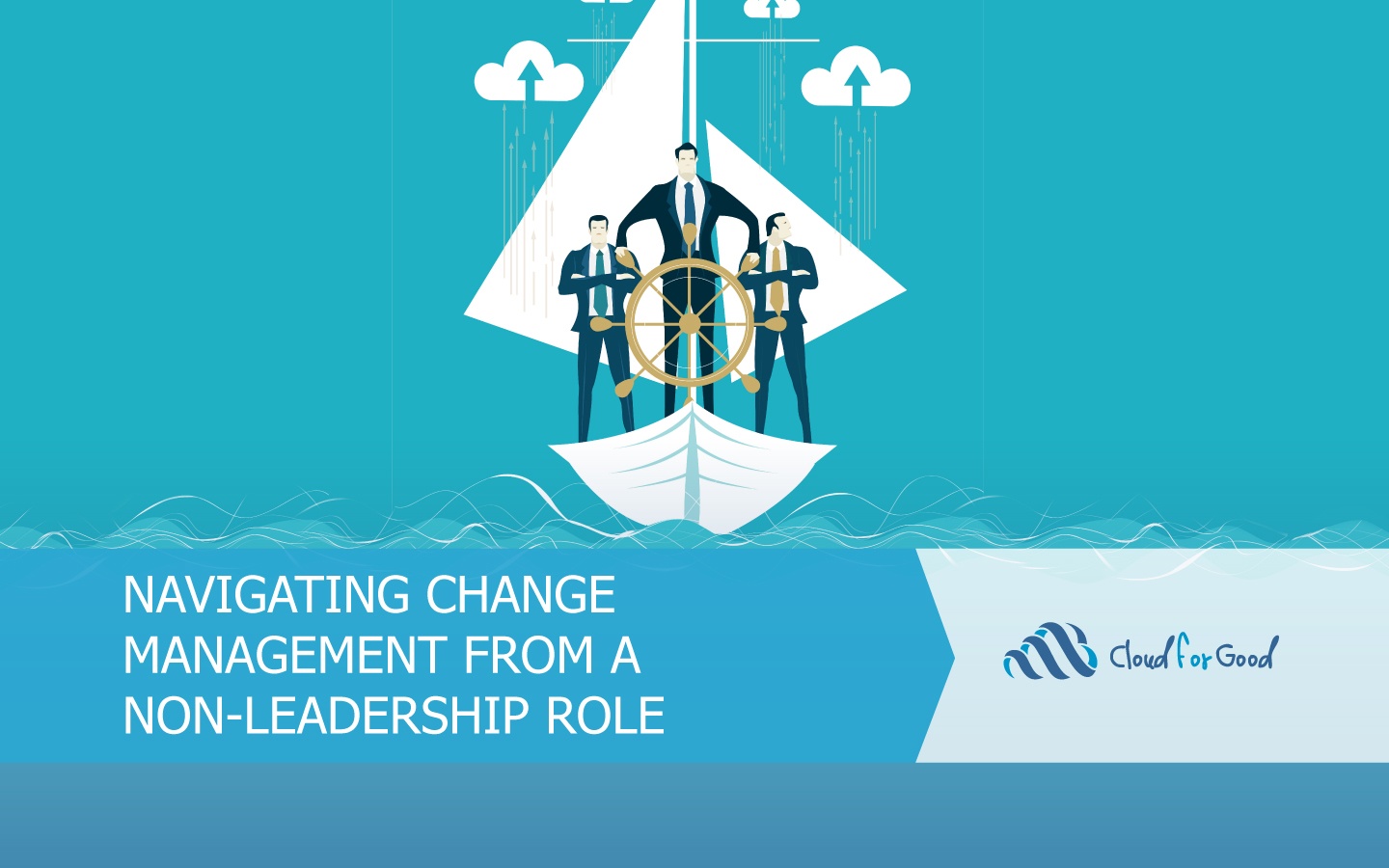Let’s face it, change is hard. Sometimes it can be fun and exciting, but changes that involve a person’s day-to-day routine are typically very challenging. When you’re making a change to your database, whether moving from excel or another CRM to Salesforce, or just making changes to an existing Salesforce instance, it’s just as important to consider the process from a change management perspective, as it is from the technical perspective. You don’t want to end with a shiny new Salesforce instance that staff are resistant to use.
While leading a change effort is challenging regardless of your role within the organization, there are unique challenges when the point person on the project is not in a formal leadership role within the organization. If this is you, fear not! You can be successful from the beginning by making sure you think about not only who will be impacted, but also how it will impact them. Keep these stakeholders in mind at each step of the process and be sure to have clear set of expectations from those in formal leadership roles – both what they expect of you, and what you can expect from them.
What’s the driver for change?
When you’re leading a change, it’s important to be aware of the driver for change. In Anderson and Anderson’s Beyond Change Management they discuss the differences between Development change, Transitional Change and Transformational Change.
- Developmental change is primarily motivated by making an improvement, meaning it involves some sort of improvement to an existing structure or process. It typically has a lower level of impact on overall mindset
- Transitional change is motivated by fixing a problem, and involves replacing broken something with something new
- Transformational change is motivated by a “change or die” mentality, meaning without some sort of change a major part of your business is in jeopardy. This is the most challenging type of change to lead, and be part of as it requires a significant shift to mindset
By recognizing the drivers for change, you can better equip yourself and your team for the process by actively preparing for what is to come. Most often, Salesforce implementations will be developmental change (adding a new app or program to an existing instance) or transitional (moving from one database that isn’t meeting your needs to Salesforce). If this is part of a larger transformational change, it is crucial to make sure everyone (leadership and all stakeholders) is aware of the magnitude and importance of the change.
Keep stakeholders in mind
When a new change is proposed, it is important to consider all the potential impacts across the organization from the beginning. Likely, the people who will be most impacted by the change will be involved in the process at some point, but it’s just as important to consider how everyone else will be impacted, even if it is a small change for them.
At the start of process, be sure to provide everyone an opportunity to learn about the proposed changes, the reasons for the changes, and what the potential impacts will be. Depending on the size of your organization, you can either have a meeting with all staff to discuss, and gather input, or for larger organizations, pull together a group of people that represent all the stakeholders.
Just as it is important to allow people to learn about the change and provide input, it’s also important to let people know what the deadline is for providing input. Without the clear communication of the project timeline, you could find yourself in a situation where some stakeholders wait to provide input and then express needs that necessitate a change to project structure. With a clear timeline at the front end of the project, and clear deadlines for different aspects of the project, you’ll help keep the project moving forward, as well as give people the chance to be heard.
Expectations
It is important to start by having a clear idea of what the Leadership’s expectations are for the project overall, and for your role in particular. Without a clear picture from the very beginning you could find yourself needing to change course mid-stream. It’s also very important to define what a successful project is before it starts. This will help you stay on track throughout the project and be sure that you have a clear target of where you’re headed.
By the same token, it’s very important for you to clearly understand what you can expect from your leadership team. Will they announce the changes? Will they be on important decision-making phone calls? Will they support you when staff voice concern over the changes? These are important conversations to have with your leadership team early in the process so you can refer back to them when things get challenging.
While change is hard, by being conscious of the way people will be impacted throughout the process and communicating at all steps of the way, it can be easier to help navigate. While it can be daunting to lead the change, by being open about the potential challenges, clear about the expectations, and receptive to ideas from stakeholders, you can be successful.
You might also be interested in:
- Change Management: Unpacking the Jargon
- Getting the Whole Team on Board: Lessons Learned about Change Management
- Theory of Change: Metrics and Monitoring





